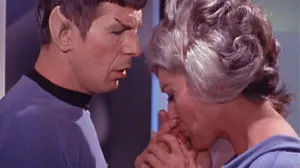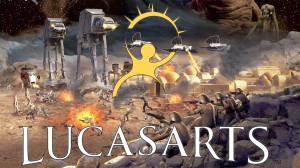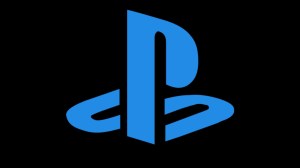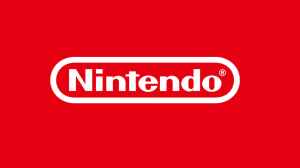In this day and age, it seems like the norm for horror cinema is for studios to either reboot familiar properties or to deliver the next chapter in a stagnant series. With successful efforts in either realm being few and far between, filmmaker Chuck Russell stands in a league of his own with his previous genre outings. In 1987, he delivered audiences A Nightmare on Elm Street 3: Dream Warriors, largely considered to be the favorite installment in the Freddy Krueger franchise outside of the original, only to follow that in 1988 with The Blob, a remake of the 1958 film that many would argue surpasses the impact of the source material. After years away from genre storytelling, Russell makes his return with Witchboard, a unique spin on the 1986 film, which hits theaters on August 15th.
Videos by ComicBook.com
Witchboard resurrects the ’80s horror classic with a chilling new vision. In present-day New Orleans, a cursed artifact unleashes a vengeful witch, drawing a young couple into a deadly spiral of possession, temptation, and occult terror.
ComicBook caught up with Russell to talk about his approach to the material, future projects, and more.

ComicBook: The original Witchboard came out at a time when you were making a name for yourself in the world of horror. What was your connection to that original movie? Was it something that immediately hooked you?
Chuck Russell: The original was very resonant. To my knowledge, it’s the first Ouija board movie. It had an MTV star named Tawny Kitaen in it. I was on board with that, but there are some movies that just get into your head. I can’t even explain why. There was a love triangle. There’s a couple of things we emulated, but I was very loose in reimagining the film. I wanted to explode the concepts.
Kevin Tenney, the original filmmaker, just loved it. I didn’t know what he’d think, because there’s no point in a remake, in my mind, unless you’re going to bring something special to it. It’s why I remade The Blob. It’s why I was confident in a new direction for Elm Street 3, having been a huge Elm Street fan.
I’ve been wanting to return to horror. That property, my interest in pendulum boards, and my interest in the real history of witches came together. Also New Orleans, which I love.
The original movie was called “Witchboard” and that was synonymous with a Ouija board. There’s now been a hundred different Ouija board movies or movies that have featured them. With both the original and with your movie, what do you think sets Witchboard apart from the generic Ouija board movie?
Well, first of all, it’s completely legit. I’ve been looking at pendulum boards as an artform for some years, and I couldn’t figure out why it hadn’t been used, particularly in the horror genre. There might be a scene somewhere, so the fans don’t have to correct me, but we wanted to center a movie on it. They’re extremely powerful. They predated Ouija boards, and Ouija boards were a direct evolution from pendulum boards.
All the crazy mythology in the film is not made up. The French Pope outlawed pendulum boards in the 1700s, and women were being burned at the stake as witches for even having them. Therefore, the pendulums were gotten rid of, and thus, Ouija boards were developed after that. So it really is true to the subject, and has a deeper history all the way back to ancient Egypt.
I warned my audiences, I won’t do a Ouija board. I designed this pendulum board to have a balance between darkness and light. I believe in the spiritual world, I believe in good and evil, but I really wanted the opportunity, cinematically, to show what was going on for centuries with pendulum boards, spellcasting, connecting to spirits, and learning more about your own fate. You see all of that. It’s basically everything I wanted to do in a horror film that I haven’t had the opportunity to do yet.
When people say, “All reboots are bad,” everyone points to The Blob as an example of, “Nope, you can make very great reboots or remakes that even surpass the original.” So for people who aren’t familiar with your work on The Blob, who just hear “Ouija board,” who just hear “remake,” what do you have to say to those people who might be apprehensive or judgmental?
We’ve got our material scattered about on the internet already and we’re getting incredible responses. You’ll see, it’s an entirely new evolution. While we honor the original, we’re far from stuck with it. I wouldn’t have done this — same thing I did with The Blob. Honestly, the same thing John Carpenter did when he did The Thing. Some people aren’t even aware there was an original before John’s and there’s been The Thing since.
The point is, we’re taking something resonant in pop culture and completely reinventing it. The cast is amazing. There were no witches in the original Witchboard. For me, it’s like, what an opportunity to take it further. I’m very happy because Kevin Tenney, who did the original, gave us an incredible review saying Chuck went his own way, but he loved it, which is nice to know.
That’s probably the best endorsement you can get, is the original director complimenting what you did.
I care. I really do. And Jamie Campbell Bower and Madison Iseman and Aaron Dominguez, check out this cast. They’re just amazing.
You have this young, up-and-coming cast, this new generation of compelling performers. What do you feel the cast brought to this project that you didn’t anticipate, that really put its own spin on what was on the page?
I’ve had the most fun bringing up new stars. You could say I’ve been lucky, but I come from theater, and I watch it, so when I cast a movie, I’m really trying to create a little chemistry set. I don’t know exactly what’s going to happen. I want to be surprised, too. I already knew Jamie from Stranger Things would be just remarkable. I had not worked with Madison and Aaron, and there’s a number of brand-new, great, upcoming stars in this piece.
So when you say, “What do they bring?” They brought the magic. My job is to work a little improvisationally to their strengths as I discover them. That’s the fun I have, and I think you can see that, that chemistry amongst this particular cast.
This is clearly a passion project for you and something you’ve been pursuing for quite some time. Reports of this gestating go back quite a few years. Since that original inception to now, finally being realized, did your version of Witchboard go through a major evolution or has it been pretty concrete in what your approach was?
There was an evolution, but really, the way things go, this is a truly independent film. When you do that, you have to see that the timing’s right, that there was the right budget. This is actually an upper-end budget for an independent film. I didn’t want to do it unless I had the production values I imagined. We’ve been, in my opinion, very successful at having a great-looking, very entertaining film with terrific practical effects. I wanted to go back to my effects and really blow it out. I had my fun doing so.
In this day and age, it’s rare that you get movies with these compelling, practical effects. Your work on Elm Street and your work on The Blob, you set a high bar when it comes to effects.
Thank you. I really tried to outdo myself on this one. The fans will decide. I remember I helped pioneer CGI with The Mask, that was very early on with that technology. I love technology, but on this one, I only use CGI to do a little bit of paint, take the wires out, things like that. Practical effects — two reasons: they’re really scarier, not only for the audience, but primarily for the cast. You’ll see they’re a little worried.
Madison Iseman really had to wait to see half a dozen hands pop up blind. The set was built eight feet in the air so we could do this live and grab her for not just one take, for several takes to get it right. And that communicates to the audience.
I think fear is a herd instinct. Whether my character is walking down a hall expecting an effect, they can trust me that it’s going to be safe. On the other hand, it’s something else, again, when the lights go on and the bell rings, it’s quiet on the set and you’re the one walking down and something’s going to explode out at you. It does a little something better for the performance than a green screen event.
The original Witchboard kicked off a trilogy of Witchboard movies. When you approached this and when you finally got to bring this to life, are you hoping this is now kicking off a new generation for a Witchboard series or do you think you left it all on the table?
Yes to both of those. Because, number one, I wanted to do everything I hadn’t done yet in horror. It’s a wild movie with a lot of elements to it.
Regarding the possibilities of being one and done, I wanted to do everything I hadn’t done in my previous horror. This is a perfect project for me to return to horror with. In particular, I’ve been interested in pendulum boards. It’s quite legit because they predated Ouija boards and they were the evolution, very specifically, of a Ouija board. The French Pope outlawed pendulum boards and was burning people at the stake as witches for having them. Thus, it became a planchette and a Ouija board in the coming years.
Those have been used since ancient Egypt and they’re a very powerful device for those who have an intention and know how to use it. I think it could be used for good, too, so beware, be cautious with your pendulum boards, just like a Ouija board, folks. So yes, I believe there’s a Witchboard universe and it’s one of the reasons I was excited to reinvent the property. And we have a whole new — you’ll see, there’s a whole new supernatural device that I think is quite fascinating, using pendulum boards.
Literally within the first five minutes, I was like, “This is not the Witchboard I remember or the Witchboard I was expecting,” so you fully succeeded in making your Witchboard feel different and unique while still honoring the core concepts.
Honestly, part of what’s unique is there’s a real history of witches. The craziest backstory to the board is all historically accurate, so that’s one of the reasons we were driven in this direction.
I know in a previous interview, Jim Carrey had mentioned he’s open to doing another Mask for the right story. Is that something that you have ever considered, wanting to return to that universe? Would it be contingent on Jim being involved?
Well, I would love Jim to be involved. Because of the original comics, there’s a lot of ways to go with The Mask. The mask of Loki is a compelling magical prop, and that’s another reason I did Witchboard. That particular board, it’s a one-of-a-kind historical board in our story. I love what [Alfred] Hitchcock used to call MacGuffin films, all about a fascinating prop.
It’s fun as a director with the visuals as well. So yes, I would do another Mask. Yes, I’d love for Jim to be in it. He was the original inspiration for me. The Mask was meant to be a horror film. Based on my love of Jim and what he was doing In Living Color, which was so unique, before, really, he was accepted as a movie star, I just said to New Line [Cinema], “It’s got to be a comedy.” So that’s the evolution of that particular story.
The evolution of this particular story is, I thought, “Well, I love the property, but I’ve seen too many Ouija board movies.” Then I realized I’ve always wanted to use a pendulum board in a film and it made perfect sense.
I brought up The Blob earlier and that feels like it’s such a perfect blend of horror, practical effects, right time, right place. Do you think you could ever see — whether you’re involved or someone else does it — do you think The Blob could ever be revived, knowing how heavily Hollywood leans into CGI effects because it’s faster, a little bit easier, or do you think that was just a magic movie that there was the right time, right place to come out?
I like movies with challenges. I’ve been asked to speak a couple of times at universities and they asked me, “Do you need to write about what you know can be done?” And I think it’s the opposite. I need to write about what I’ve never seen before. I respect the audience. I want to see a movie. That’s something I’ve never seen before. So I think the fun as a filmmaker is to just be wild with a wishlist of what you want to do in a script, although I have a concept of budget.
The Blob, I had no idea how to do it at the time. It turned out the physical effects were very challenging, but we got it done, right? I won’t bore you with all the slimy details, but we would go home covered in real blob slime from the full-scale blob effect.
In this movie, the cat was the big thing. My production team said that it can’t be done. They said what I’d written for this cat, which is the familiar, would have to be CGI and, famously, cats don’t look that good in CGI. The Lion King, yeah, but house cats, strangely enough — even in a recent Tom Hanks movie, you notice movie cats, CGI doesn’t really make it. They break my rule in horror of being distracting, but I happened to find the world’s greatest cat performer, Tatiana, who was only one. There wasn’t a cat double. It’s a very similar situation to the dog in The Mask.
I’m a big animal lover, so it’s about learning what this animal likes to do and basically always having a treat for them until they learn that’s the game. So I’m quite proud of our witch’s familiar. When the cat shows up, watch out. That’s the way we structured this film.
Witchboard lands in theaters on August 15th.
This interview has been edited for length and clarity. You can contact Patrick Cavanaugh directly on Twitter or Instagram.








